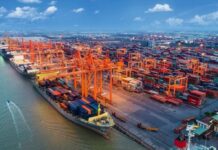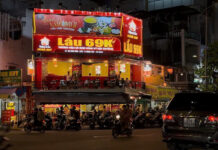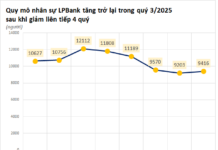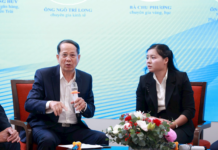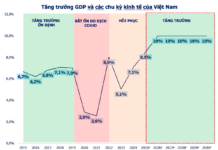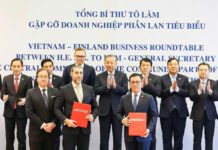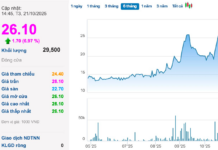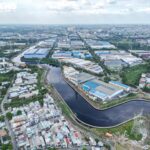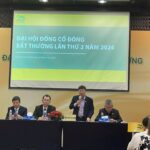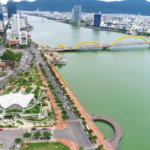Ho Chi Minh City Government Submits Pre-Feasibility Study Report for Ring Road 4 Project
According to information from the Ho Chi Minh City People’s Committee, Chairman of the City People’s Committee Phan Van Mai has recently signed a document submitting a pre-feasibility study report for the investment project to construct the Ho Chi Minh City Ring Road 4 to the Prime Minister and the Ministry of Planning and Investment.
In terms of scale, the document clearly states that the total length of the entire Ho Chi Minh City Ring Road 4 route presented to the National Assembly for consideration is 159.31 km. Specifically, the section passing through Ba Ria – Vung Tau province is 18.23 km long, Dong Nai is 46.08 km long, Ho Chi Minh City is about 16.7 km long, and Long An is 78.3 km long (including a 74.5 km main section and a 3.8 km section belonging to Ho Chi Minh City’s jurisdiction).
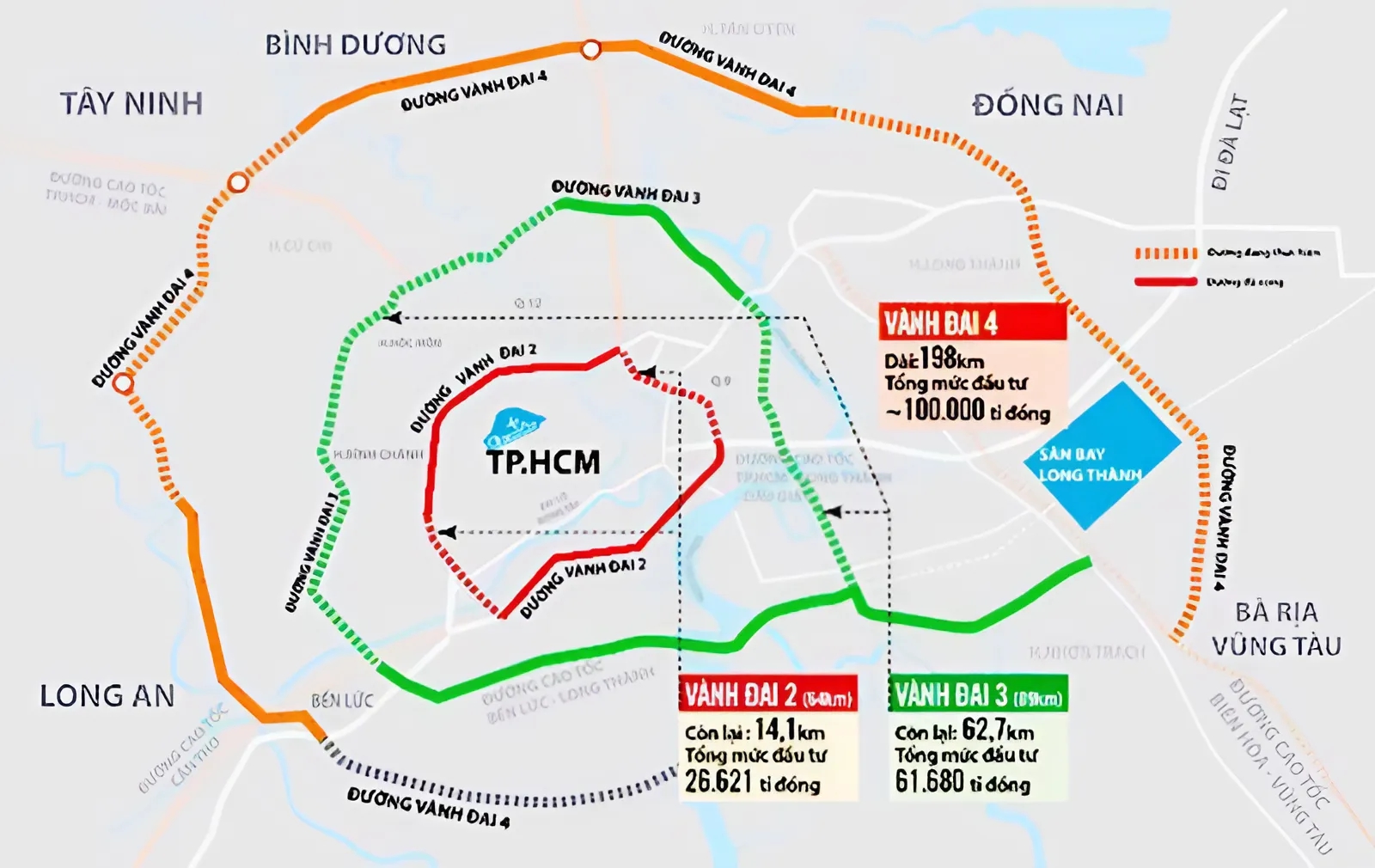
The scale of Ring Road 4 is estimated at VND 122,774.28 billion. Image: VnEconomy
The section passing through Binh Duong province, approximately 47.95 km in length, will be implemented independently according to the investment policy approved by the Provincial People’s Council. The People’s Committee of Binh Duong province has also committed to adjusting the project in phase 1 to ensure expressway standards as suggested by the Ministry of Transport.
In the initial phase, localities such as Ho Chi Minh City, Binh Duong, Ba Ria – Vung Tau, and Long An will carry out land clearance once for the planned eight-lane road. The main expressway will be invested in first with four lanes and two emergency lanes, while the collection roads and parallel roads on both sides will also be synchronously implemented.
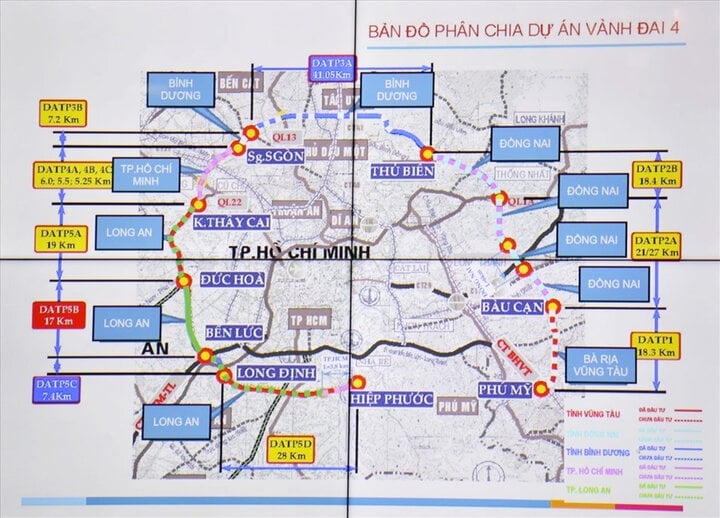
Map of the Ring Road 4 Project. Image: VTC News
The estimated total investment for phase 1 is about VND 122,774.28 billion, implemented in the form of a BOT contract. This includes capital mobilized from investors and loans, including interest, expected to reach VND 53,109 billion; the remaining amount will be funded by the state budget.
The localities plan to select investors in 2025 and carry out compensation, site clearance, and resettlement from 2025 to 2026, after the investment policy is approved. The sections of the project passing through each province are expected to commence construction in the third quarter of 2026 and be completed by 2028.
Investing in Ring Road 4 to Boost Economic Growth and Enhance Competitiveness
Ho Chi Minh City emphasizes that the construction of Ring Road 4 is not only a strategic task but also an important step towards realizing the resolutions of the Party and the State regarding the development of the Southeast region and Ho Chi Minh City.
The project also embodies the goals of the 13th National Congress of the Communist Party of Vietnam, contributing to the modernization of the road transport system and laying the foundation for Vietnam to enter a new era where the aspiration to become a powerful country becomes a reality.
According to the proposal from the Ho Chi Minh City People’s Committee, Ring Road 4 will create a strategic transport axis, connecting the Southeast region with the Mekong Delta and the Central Highlands. This will promote socio-economic development, open up new spaces for growth, efficiently exploit land potential, and facilitate the formation of industrial parks, urban areas, and logistics centers along this strategic corridor.
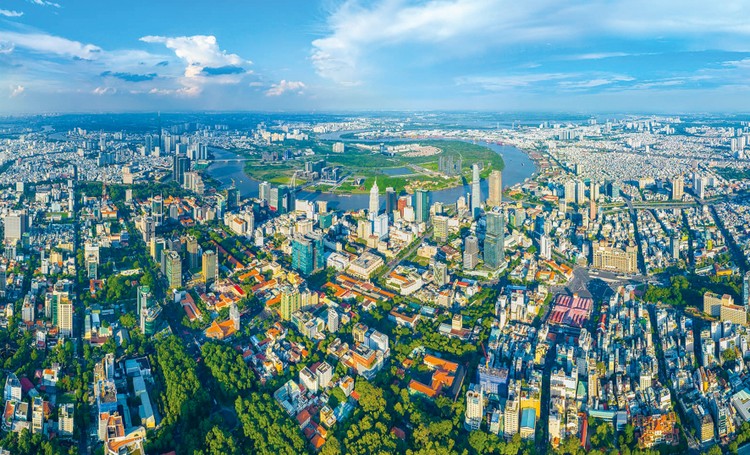
Ho Chi Minh City – Binh Duong – Dong Nai – Ba Ria – Vung Tau is identified as the driving force of the Southeast region, with Ho Chi Minh City as the growth pole. Image: Dau Tu Newspaper
Ring Road 4 will not only facilitate the flow of goods from industrial parks and urban areas to seaports and the Long Thanh International Airport but also optimize inter-provincial transport. Traffic will be diverted from a distance, bypassing densely populated areas, reducing travel time, transport costs, congestion, and environmental pollution in urban areas.
Specifically, vehicles traveling from the northwest to the southeast and vice versa will be conveniently connected, supporting traffic outside the scope of Ring Road 3. National Highway 13 and National Highway 22 will also have easier access to strategic ports such as the port in Long An and Hiep Phuoc Port in Ho Chi Minh City.
At the same time, the road will provide an additional connection option between Binh Duong and Long Thanh Airport, in addition to Ring Road 3 and the Ho Chi Minh City – Long Thanh Expressway.
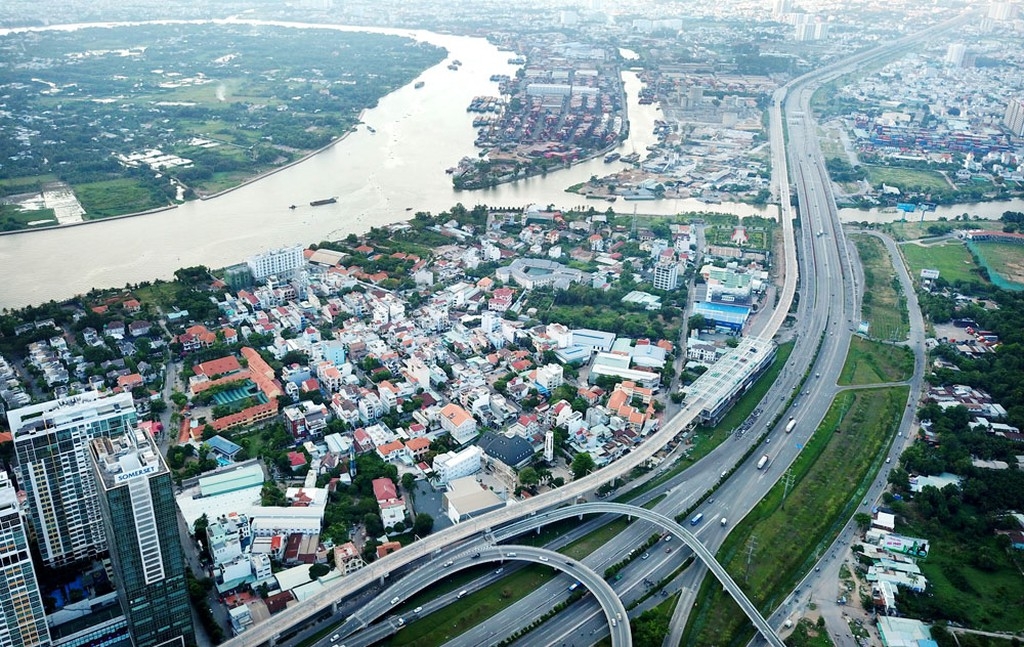
Ring Road 4 will usher in a new era of development for the Southeast region. Image: Kinh Te & Du Bao
The Ho Chi Minh City People’s Committee affirms that transport infrastructure is a core factor in socio-economic development and a crucial measure of national competitiveness.
In reality, localities connected by a network of expressways consistently demonstrate superior economic growth rates compared to the national average, contributing to improved living standards, poverty alleviation, and transformative changes in these regions.
Therefore, strengthening investment in transport infrastructure, particularly ring roads, is not only vital for the Key Economic Region of the South but also holds decisive significance for the entire country. This project will boost economic growth and enhance the competitiveness of the national economy on the international stage.
The Southeast region, through which Ring Road 4 passes, covers an area of over 23,560 km2 with a population of approximately 18.8 million people (as of 2022). It is considered the richest region in Vietnam, boasting numerous superior economic indicators compared to other areas.
The Southeast region contributed over 30.9% to the country’s GDP in 2022, despite accounting for only about 8% of the land area and 18% of the population. This highlights the region’s high level of economic development.
As of 2022, the Southeast region also had the highest average monthly income per person (VND 6.33 million). Its GRDP per capita reached USD 6,900, surpassing the national average of USD 4,110.
By 2050, the Southeast region aims to become a developed region with high income, strong economic potential, and the most modern economic structure in the country. The targeted growth rate for the period 2031-2050 is approximately 7.5% per year, with a GRDP per capita of about USD 54,000.
Thai Ha
The Ground Handling Giants of Saigon and Hanoi Form a 7.81 Trillion VND Consortium, Gear Up to Bid for a Project at Long Thanh Airport
Introducing the dynamic duo that’s taking the industry by storm – SGN and HGS. With SGN leading the pack as the head of the joint venture, contributing a substantial 75% of the capital, and HGS bringing up the rear with a strong 25%, this power couple is set to dominate the market. Their combined expertise and resources create a force to be reckoned with, leaving competitors in their dust. Get ready for a game-changing journey as this formidable team takes center stage, revolutionizing the industry with their unparalleled skills and strategic partnership.
The Battle for Rent: TPHCM Apartment Complexes Take Goldsun to Court
The management boards of several apartment complexes in Ho Chi Minh City have taken legal action against a company that has allegedly been delinquent in paying its advertising space rental fees. The defendant, Golden Sun Media Joint Stock Company, is accused of failing to pay the agreed-upon fees for utilizing advertising space in these residential buildings. This case highlights the importance of upholding contractual obligations and the potential consequences for those who fail to do so.
The Metro Line: A Vision for Progress
A proposal to bring progress and development to the city, with a new vision for the Metro Ben Thanh – Tham Luong line, now to be realized with a government-funded budget.
The Ho Chi Minh City authorities have announced that the 11-kilometer Ben Thanh – Tham Luong section of the Metro Line 2 will now be funded by the state budget, rather than through ODA capital as previously planned. This shift in funding sources underscores the government’s commitment to modernizing the city’s transport infrastructure and creating a seamless, efficient, and world-class metro system.



